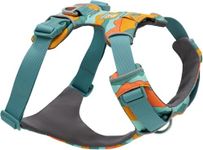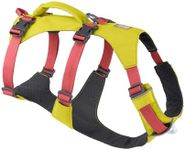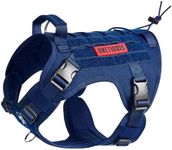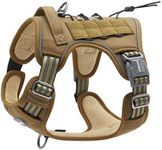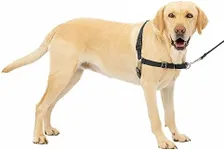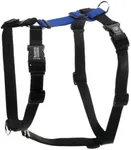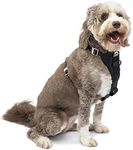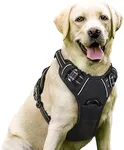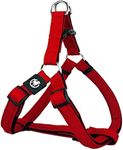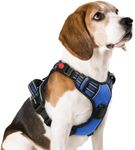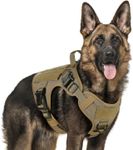Buying Guide for the Best No Pull Dog Harnesses
Choosing the right no-pull dog harness is important for both your dog's comfort and your control during walks. A good harness can help reduce pulling, make walks more enjoyable, and prevent strain on your dog's neck. When shopping for a no-pull harness, it's important to consider your dog's size, behavior, and walking habits. Understanding the key features will help you find a harness that fits well, is easy to use, and effectively discourages pulling.Harness TypeThe type of harness refers to its design and how it fits on your dog. Common types include front-clip, back-clip, and dual-clip harnesses. Front-clip harnesses have the leash attachment at the chest, which helps redirect your dog if they pull, making them a popular choice for training. Back-clip harnesses attach at the back and are generally more comfortable but offer less control over pulling. Dual-clip harnesses offer both options, giving you flexibility. If your dog is a strong puller or you are working on training, a front-clip or dual-clip harness is usually best. For calmer dogs or those who don’t pull much, a back-clip harness may be sufficient.
Fit and AdjustabilityFit and adjustability refer to how well the harness can be tailored to your dog's body. A good fit is crucial for comfort and safety, preventing chafing or slipping out. Harnesses often come with adjustable straps at the neck, chest, and sometimes belly. Some harnesses offer more adjustment points than others. For growing dogs or those with unusual body shapes, more adjustability is helpful. Always measure your dog and check sizing guides to ensure a snug but comfortable fit.
Padding and MaterialPadding and material affect the comfort and durability of the harness. Soft padding helps prevent rubbing and discomfort, especially for dogs with sensitive skin or those who wear the harness for long periods. Materials like nylon, polyester, or mesh are common, each offering different levels of breathability and strength. If your dog is active or you walk in hot weather, look for breathable materials. For strong or large dogs, choose sturdy, reinforced materials.
Leash Attachment PointsLeash attachment points are where you clip the leash to the harness. Some harnesses have only one point, while others have two (front and back). The location of the attachment affects how much control you have. Front attachments help steer your dog and reduce pulling, while back attachments are better for casual walks. If you want versatility, look for a harness with both options. Think about your walking style and your dog's behavior to decide which is best for you.
Ease of UseEase of use refers to how simple it is to put the harness on and take it off. Some harnesses have step-in designs, while others go over the head or have quick-release buckles. If your dog is wiggly or nervous, a harness that is easy and quick to put on will make walks less stressful. Consider your dog's temperament and your own preferences when choosing a design.
Reflective FeaturesReflective features are strips or stitching that make the harness visible in low light. This is important for safety if you walk your dog early in the morning or at night. Some harnesses have more reflective material than others. If you often walk in the dark, prioritize harnesses with good visibility to help keep you and your dog safe.
